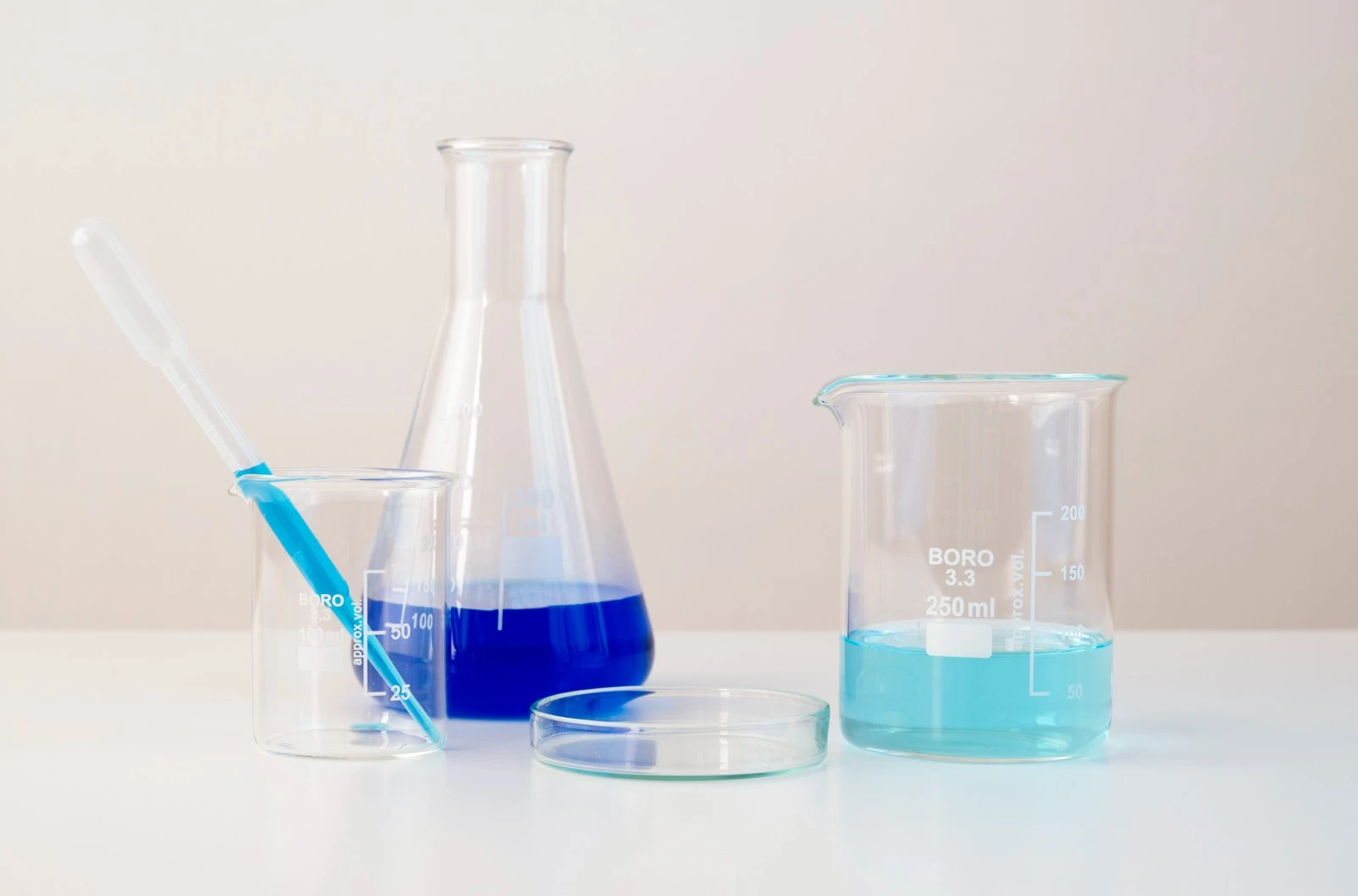Stearic Acid: Stearic acid is a saturated, straight-chain fatty acid found in animal fats and vegetable oils. It has a high melting point and is solid at room temperature. Stearic acid is widely used in soap making, cosmetics, and as a hardening agent in candles and plastics. Its simplicity and cost-effectiveness make it a staple in various formulations.
Stearic acid is characterized by a straight-chain structure, making it a saturated fatty acid. This linear configuration contributes to its high melting point and solid state at room temperature.
Has a lower melting point, making it suitable for applications requiring flexibility at lower temperatures.
Exhibits a high melting point, ideal for products needing structural integrity, like candles and soaps.
Soluble in oils and organic solvents, aiding in its use as an emulsifier in cosmetic formulations.
Insoluble in water but soluble in alcohol and oils, commonly used in soap and detergent formulations.
While stable, it is more susceptible to oxidation compared to isostearic acid.
Melting Point: Has a lower melting point, making it suitable for applications requiring flexibility at lower temperatures.
Solubility: Soluble in oils and organic solvents, aiding in its use as an emulsifier in cosmetic formulations.
Chemical Structure: Stearic acid is characterized by a straight-chain structure, making it a saturated fatty acid. This linear configuration contributes to its high melting point and solid state at room temperature.
Melting Point: Exhibits a high melting point, ideal for products needing structural integrity, like candles and soaps.
Solubility: Insoluble in water but soluble in alcohol and oils, commonly used in soap and detergent formulations.
Stability :While stable, it is more susceptible to oxidation compared to isostearic acid.
Temperature: Isostearic acid remains stable under varying temperatures, while stearic acid’s high melting point provides stability at higher temperatures.
pH: Both acids exhibit stability across a wide pH range, but isostearic acid’s branched structure offers better performance in extreme pH environments.
Stearic Acid: Stearic acid is naturally derived from animal fats and vegetable oils. It is extracted and purified through a process called hydrolysis, where fats and oils are broken down to release the fatty acids.
Stearic Acid: Readily available from natural sources such as beef tallow and cocoa butter. Its widespread availability makes it a cost-effective option for various applications.
Stearic Acid: Acts as a hardening agent, giving stability and structure to products. It is widely used in soap making, cosmetics, and as a thickening agent in formulations, ensuring products maintain their form and effectiveness.
Used in skincare products for its moisturizing and smoothening properties. Ideal for lotions, creams, and sunscreens.
Commonly found in soaps, shampoos, and shaving creams due to its thickening and stabilizing effects.
Less commonly used in lubricants but provides some utility in specific formulations where rigidity is required.
Cosmetics: Used in skincare products for its moisturizing and smoothening properties. Ideal for lotions, creams, and sunscreens.
Cosmetics: Commonly found in soaps, shampoos, and shaving creams due to its thickening and stabilizing effects.
Lubricants: Less commonly used in lubricants but provides some utility in specific formulations where rigidity is required.
Isostearic Acid: Widely used in skincare products, lotions, and cosmetics due to its emollient properties. It provides moisturization and helps in improving the texture and spreadability of products.
Stearic Acid: Commonly found in soaps, candles, and cosmetics. Its hardening and thickening properties make it ideal for solid formulations like bar soaps and candles, as well as adding stability to creams and lotions.
Stearic Acid: Used in rubber processing, plastics, and as a release agent. It helps in improving the texture and processability of rubber and plastic products, and its lubricating properties are beneficial in mold release applications.
Versatility: Suitable for a wide range of formulations, from cosmetics to industrial products.
Less Comedogenic: Less likely to clog pores, making it ideal for skincare products.
Higher Cost: Generally more expensive due to synthetic production processes.
Less Natural Availability: Not as readily available from natural sources, relying more on synthetic production.
Cost-Effective: Economical due to its natural abundance and simple extraction process.
Widely Available: Easily sourced from both animal fats and vegetable oils.
Less Stable: More susceptible to oxidation compared to isostearic acid.
Higher Comedogenic Potential: More likely to clog pores, which can be a concern for skincare products.
Stearic Acid: Stearic acid remains a staple in established markets, with steady demand due to its cost-effectiveness and wide availability. It continues to be a preferred choice in traditional applications such as soap making, candle production, and as a stabilizer in various formulations.
Stearic Acid: Derived from both animal fats and vegetable oils, stearic acid’s environmental impact depends on its source. Palm oil, a common source, is associated with deforestation and habitat destruction. Sustainable sourcing initiatives, such as RSPO (Roundtable on Sustainable Palm Oil) certification, aim to mitigate these impacts by promoting responsible production practices.
In comparing isostearic acid vs stearic acid, it’s important to consider their environmental footprints and the efforts toward sustainable sourcing. Choosing sustainably produced fatty acids can significantly reduce the ecological impact of your products.





